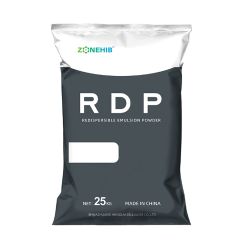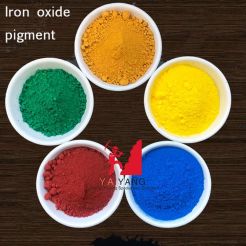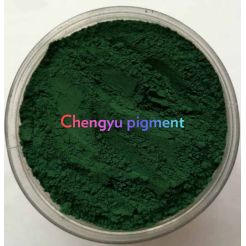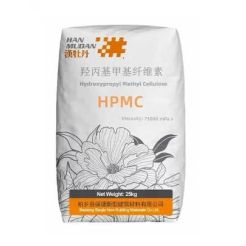Abscisic Acid 90% Tc Plant Hormone
A plant hormone that inhibits growth and gets its name because it causes leaves to fall off. May be widely distributed in higher plants. In addition to promoting leaf shedding, there are other functions, such as making buds enter a dormant state and promoting potato tuber formation.
Product Description
Introduction
| Product Name | Abscisic Acid |
| CAS | 21293-29-8 |
| Molecular formula | C15H20O4 |
| EINECS | 244-319-5 |
| Package | 1kg/Bag; 25kg/drum or customizied |
| Fusing Point | 163 |
| Customs code | 3822009000 |
| Appearance | White powder |
| Function | Cause bud dormancy, leaf shedding and inhibit cell growth. |
| Storage conditions | Avoid contact with strong oxidants, acids, acid chlorides, acid anhydrides, carbon dioxide. |
A plant hormone that inhibits growth and gets its name because it causes leaves to fall off. May be widely distributed in higher plants. In addition to promoting leaf shedding, there are other functions, such as making buds enter a dormant state and promoting potato tuber formation. It also has an inhibitory effect on cell elongation.
Nature
Abscisic acid is a 15-carbon sesquiterpene compound. Naturally occurring abscisic acid is an enantiomeric structure, specifically the right-handed compound (S)-ABA. The physiological activity of (R)-ABA is in most cases the same as that of (S)-ABA. Its physiological activity depends on the following conditions :
① free carboxyl group,
② double bond at α- or β- position on the cyclohexane ring,
③ double bond at C-2 is cis. 2-trans ABA is active only after isomerization in light. The free acid produced by the hydrolysis of the ester chain is also active.
Natural abscisic acid is a white crystalline powder, easily soluble in methanol, ethanol, acetone, chloroform, ethyl acetate and trichloromethane, etc., insoluble in ether, benzene, etc., water solubility 3-5 g/L(20℃). The stability of abscisic acid is good, placed at room temperature for two years, the content of effective ingredients is basic.
Natural abscisic acid, along with auxin, ethylene, gibberellin and cytokinin, is listed as the five major plant hormones. It can improve the drought resistance and salt tolerance of plants, and has high value for the development and utilization of middle and low yield fields, afforestation and afforestation of deserts. ABA is also an effective inhibitor of seed germination, so it can be used for seed storage to ensure the storage quality of seeds and fruits. In addition, ABA can also cause the rapid closure of leaf stomata, which can be used for flower preservation, regulating flowering, promoting rooting, etc., and has great application value in flower gardening. The study of ABA and its response genes can reveal the molecular process of plant stress resistance, and lay a foundation for the targeted enhancement of crop's adaptability to the environment.
Abscisic acid has a broad application prospect in agricultural production and can produce huge economic and social benefits. Because the optical configuration of natural abscisic acid in plants is only (+)-cis,trans-ABA, the traditional chemical synthesis method is extremely expensive to produce, so at present, only Japan, the United States and other developed countries are used in large-scale agricultural production.
Peculiarity
Abscisic acid is also called S-attractant. It has the ability to promote balanced absorption of water and fertilizer and coordination of metabolism in the body. It can effectively regulate the root/crown, vegetative growth and reproductive growth of plants, and play an important role in improving the quality and yield of crops.
Stress-inducing factors in plants
S-inducidin is the "first messenger" that initiates the expression of anti-stress genes in plants and effectively activates the anti-stress immune system in plants. It has the ability of cultivation source to strengthen the comprehensive resistance of plants. It plays an important role in fighting drought and saving water in agricultural production, reducing disaster and ensuring production and restoring ecological environment.
Green products
S-inductin is a pure natural product of all green plants, which is obtained by microbial fermentation with high purity and high growth activity. It is non-toxic and non-irritating to humans and animals. A new efficient, natural green plant growth active substance.
Effect
Promote shedding
From the name of abscisic acid, it can be seen that accelerating plant organ shedding is an important physiological effect of ABA.
There are different views on leaf, flower and fruit shedding caused by ABA. Addicott(1982), as one of the discoverers of ABA, believed that the effect of endogenous ABA promoting shedding was positive based on a large number of facts. But ABA is used as a stripping
Method for determination of substances that promote leaf litter
Method for determination of substances that promote leaf litter
The field trials of foliants have not been successful. This may be due to the counteracting effect of IAA, GA and CTK on ABA in the leaves.
Milborrow suggested that exogenous ABA could induce abscission, but the effect was lower than that of exogenous ethylene.
In reviewing the effects of ethylene and ABA on abscission, Osborne(1989) concluded that ABA may not have a direct role in abscission, but only causes premature senescence of organ cells and subsequently stimulates the increase of ethylene production to induce abscission, and the real abscission process is initiated by ethylene rather than ABA.
The biological method of ABA generally adopts the shedding method of bean leaves (or cotton leaves), and the lanolin paste of the tested substance is applied to the stump of the opposite petiole, and the shedding speed is observed. In addition, oat or wheat coleoblast segment elongation inhibition was also used.
Inhibit growth
ABA is a strong growth inhibitor that can inhibit the growth of whole plants or isolated organs. The effect of ABA on growth is opposite to that of IAA, GA and CTK, and it inhibits cell division and elongation. It inhibits the elongation and growth of organs such as the coleoptile, shoots, roots and cotyl.
Promoted dormancy
In short autumn days, ABA content in leaves of many woody plants increased and buds entered dormancy. Application of ABA to the flourishing twigs of these woody plants induces bud dormancy. The dormant buds of potato also contained more ABA. Therefore, the potato can be treated with ABA to prolong its dormant period.
The dormant seeds of red pine, peach, chestnut and maple contain more ABA. After several months of low temperature stratification treatment, ABA content in seeds decreased and germination rate increased significantly. However, ABA content may not be the direct cause of seed dormancy. The content of ABA in the bark of red pine seeds was high. The ABA content decreased obviously after washing, but the germination rate was still very low. Further analysis of ABA content in seeds of Pinus yunnanensis, Pinus Tabulaeformis, Pinus huashanensis and Pinus whitebark showed that some pine seeds also had higher ABA content, but did not show dormancy. For example, the ABA content of non-dormant pine seeds is about 10 times higher than that of dormant red pine seeds.
The germination of lettuce, radish and other seeds was also inhibited by ABA.
Stomatal closure
There are two signal transduction pathways that regulate stomatal closure: promoting stomatal closure and inhibiting stomatal opening. Under the condition of water shortage, the content of ABA in plant leaves increased, which caused stomatal closure. This is because ABA promotes outflow of potassium ions, chloride ions and malate ions, which promotes stomatal closure. Spraying the leaves with ABA aqueous solution can close stomata and reduce transpiration rate. Therefore, ABA can be used as an anti-transpiration agent. In addition, ABA inhibits the action of potassium ions and proton pumps, thus inhibiting stomatal opening.
Regulate the development of seed embryos
In recent years, it has been noted that endogenous ABA plays an important role as a positive regulator during seed embryo development. Endogenous ABA can promote normal embryo maturation and inhibit premature germination. In immature embryo culture, exogenous ABA can accelerate the formation of some special storage proteins. In the absence of ABA, these embryos either cannot synthesize these proteins or form very little of them. This suggests that ABA levels in early and middle seed development control the accumulation of storage proteins. Whether ABA also controls the accumulation of starch and fat in the developing embryo is an open question.
In addition, ABA can also be used as a plant defense against salt damage, heat damage and cold damage, which may be related to its ability to promote the production of new stress proteins in plants. ABA also promotes flower bud differentiation in some fruit trees (such as apples) and flowering in some short-day plants (such as blackcurrants) under long-day conditions.
Increased stress resistance
In general, drought, cold, high temperature, salt and waterlogging and other stresses can cause the rapid increase of ABA in plants, while the stress resistance is enhanced. For example, ABA can significantly reduce the damage of ultrastructure of chloroplasts at high temperature and increase the thermal stability of chloroplasts. ABA can induce the resynthesis of certain enzymes and increase the cold resistance, waterlogging resistance and salt resistance of plants. For this reason, ABA is called a stress hormone or stress hormone.
Influence differentiation
Gibberellin can cause female cannabis plants to form male flowers, this effect can be reversed by abscisic acid, but abscisic acid can not cause male cannabis plants to form female flowers.
metabolism
The main synthetic parts of abscisic acid are root crowns and wilted leaves. Stems, seeds, flowers and fruits also have the ability to synthesize abscisic acid. For example, abscisic acid is synthesized in the cytoplasm of spinach mesophyll cells and then transported throughout the cell. Abscisic acid is a weak acid, and the substrate of chloroplasts has a high pH, so abscisic acid accumulates in a large amount in the chloroplast in an ionic state.
The abscisic acid content of grapes
The abscisic acid content of grapes
The passivation of ABA
ABA can be inactivated by covalent bonding with monosaccharides or amino acids in the cell. The ABA in the bound state can be hydrolyzed and re-released. Therefore, conjugated ABA is the storage form of ABA. However, the rapid increase of ABA caused by drought does not come from the hydrolysis of the bound ABA, but from the resynthesis.
Oxidation of ABA
The oxidation products of ABA are phaseic acid and dihydrophasei acid. The activity of safflower acid is very low, while dihydrosafflower acid has no physiological activity.
Apply
Abscisic acid has a broad application prospect in agricultural production and can produce huge economic and social benefits. In summary, there are mainly the following aspects:
(1) Abscisic acid is an effective inhibitor of seed germination, and it exists as a major growth inhibitor in many dormant seeds of plants. The seeds of many plants can be soaked with abscisic acid to prevent germination, and its effect is reversible, it is easy to be washed out from treated seeds and resume growth again, so abscisic acid can inhibit seed germination. For seed storage.
(2) Abscisic acid can promote the accumulation of storage substances in seeds and fruits, especially storage proteins and sugars. The application of abscisic acid at the early stage of seed and fruit development can increase the yield of food crops and fruit trees.
(3) Abscisic acid can enhance the ability of plants to resist cold and freeze, and can be applied to help crops resist low temperature cold damage during early spring and cultivate new crop varieties with strong cold resistance. For example, in the field experiment conducted in Beijing, the winter wheat of Xindong No. 2 was soaked with 10~6 M for 24 hours, and sown on October 26, the first year, when the wheat seedling was just unearthed, it entered the winter, and when the second year was green, the survival rate of the control was 51.4%, while that of the acid soaking treatment reached 96.3%. The effect of abscisic acid on improving the cold resistance of wheat has two characteristics: first, it can improve the cold resistance without inhibiting the growth; Second, it can induce the improvement of cold resistance under warm conditions.
These effects of abscisic acid are not only of great significance for exploring the expression and regulation of cold resistance genes, but also may bring hope for preventing overwintering crops from freezing damage in spring.
(4) Abscisic acid can improve the drought resistance and salt tolerance of plants, and has high application value for helping humans resist more and more arid environments, developing and utilizing middle and low yield fields and afforestation.
(5) Applying exogenous abscisic acid to wheat can inhibit rod elongation, increase ear weight, and resist crop lodging; Low concentration of abscisic acid can promote the formation and redifferentiation of adventitious roots, which has a broad application prospect in tissue culture.
Abscisic acid is a common natural substance in plants, which is naturally contained in fruits, vegetables and food consumed by humans, and is safe for humans and the environment. The raw materials used in the production process of abolic acid are non-toxic and harmless agricultural and sideline products, no harmful elements or substances are added, and no toxic elements exist in its chemical structure.

Pharmacological action
Abscisic acid (absc isic ac id, ABA) is one of the classic plant hormones. It plays an important role in the life cycle of plants, including regulating plant growth, development and dormancy, and regulating plant resistance to low temperature, drought, salinity and pathogenic bacteria. Recent studies have shown the presence and response of ABA in microorganisms such as fungi, lower sponges and mammals. A variety of human and animal tissues and cells can release ABA under physiological conditions or stimulated conditions, and has significant regulatory effects on immune cells, cardiovascular tissues and cells, stem cells and pancreatic cells, and is considered to be a widespread universal signaling factor in the biological world, which may be used in the treatment of a variety of diseases.
Value
Abscisic acid is a key factor in balancing the metabolism of endogenous hormones and growthrelated active substances in plants. Abscisic acid can promote the balanced absorption of water and fertilizer in plants and coordinate metabolism in vivo. Abscisic acid can effectively regulate plant root/crown, vegetative growth and reproductive growth, and play an important role in improving the quality and yield of crops. The application of abscisic acid can reduce the application amount of chemical pesticides, and has important physiological activity and application value in improving the quality of agricultural products.
In addition, exogenous abscisic acid can cause the rapid closure of leaf stomata, inhibit transpiration, and can be used to keep flowers fresh or prevent wilting during the transport of crop seedlings. Abscisic acid can also control flower bud differentiation and regulate flowering time, which has great application value in flower horticulture.
Ababolic acid is a natural plant growth regulator. Ababolic acid and its composite practical preparations can be widely used in rice, vegetables, flowers, lawns, cotton, Chinese herbs, fruit trees and other crops to improve the growth quality, seed setting rate and quality of crops in low temperature, drought, spring cold, salt, disease and insect pests and other adverse growth environment, and improve the unit yield of medium and low yield fields. Reduce the amount of chemical pesticides.
Abscisic acid can be widely used in urban lawn, garden and other green construction, applied in the western region of water-saving agriculture, facility agriculture, ecological vegetation restoration and reconstruction, which is of great significance for the development of agricultural industrialization in China. Therefore, its economic benefits, social benefits, environmental benefits are very significant.
After the application market of practical preparations of abscisic acid is opened, the direct economic benefits generated by the production enterprises are hundreds of millions. Its application in greenhouse vegetable production, to recover the losses caused by cold damage and pests, and due to the improvement of vegetable quality, pesticide residue reduction brought about by the improvement of domestic and foreign market competitiveness, the indirect benefits formed, and the indirect economic benefits brought by the rice seed industry will also be hundreds of millions.
S-inductin
Abscisic acid is also called S-inductin: At present, there are industrial manufacturers." Sichuan Longpython Fusheng Technology Co., LTD." "Sichuan Kerisen Biological Engineering Co., LTD." production
S-inducidin: A new physiological effect was discovered. It includes inducing drought resistance, cold resistance, freezing resistance, saline-alkali resistance, and promoting rooting.
The "growth balance factor" of plants
S-inducidin is a key factor to balance the metabolism of endogenous hormones and growth-related active substances in plants. It has the ability to promote balanced absorption of water and fertilizer and coordination of metabolism in the body. It can effectively regulate the root/crown, vegetative growth and reproductive growth of plants, and play an important role in improving the quality and yield of crops.
"Stress-inducing factors" in plants
S-inducidin is the "first messenger" that initiates the expression of anti-stress genes in plants, and can effectively activate the anti-stress immune system in plants. It can strengthen the comprehensive resistance of plants (drought resistance, heat resistance, cold resistance, disease and insect resistance, saline-alkali resistance, etc.). It plays an important role in fighting drought and saving water in agricultural production, reducing disaster and ensuring production and restoring ecological environment.
Green products
S-inducidin is a pure natural product of all green plants, which is obtained by microbial fermentation with high purity and high growth activity. It is non-toxic and non-irritating to humans and animals. It is a new type of high efficiency, natural green plant growth active substance.

Email: senton3@hebeisenton.com
Mob.: +86 199 4348 8906
Tel.: +86 311 6800 1160
Add.: 17th COFCOHB Plaza No.345 Youyi North Street Shijiazhuang Hebei China










